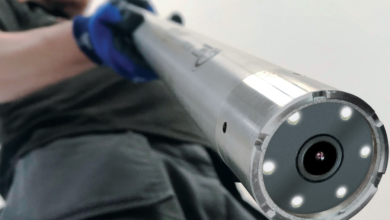What to Know About Hiring a Medical Malpractice Lawyer in Montana
This guide will provide detailed insights into what to consider when hiring a medical malpractice lawyer in Montana and how they can help you seek justice.

Medical malpractice cases can be complex and emotionally challenging. If you or a loved one has suffered due to medical negligence in Montana, hiring a skilled medical malpractice lawyer is crucial. Understanding the legal aspects, the qualifications of an attorney, and the steps involved in a lawsuit can help you make informed decisions. This guide will provide detailed insights into what to consider when hiring a medical malpractice lawyer in Montana and how they can help you seek justice.
1. Understanding Medical Malpractice in Montana
Medical malpractice occurs when a healthcare provider, such as a doctor, nurse, or hospital, fails to meet the accepted standard of care, resulting in harm to the patient. Common types of medical malpractice cases include:
- Misdiagnosis or delayed diagnosis: when a doctor fails to diagnose a condition correctly or in a timely manner, leading to worsening health conditions.
- Surgical errors: mistakes during surgery, such as operating on the wrong site or leaving surgical instruments inside the body.
- Medication errors: incorrect prescriptions, dosage mistakes, or administration of the wrong medication.
- Birth injuries: negligence during childbirth, leading to injuries for the mother or child.
- Failure to treat: When a doctor correctly diagnoses a condition but fails to provide appropriate treatment.
Montana law allows victims to pursue compensation for damages caused by medical negligence, but certain legal requirements must be met.
2. Statute of Limitations for Medical Malpractice Cases in Montana
One of the most critical aspects of a medical malpractice lawsuit is the statute of limitations—the deadline to file a claim. In Montana:
- You generally have three years from the date of injury or discovery of malpractice to file a lawsuit.
- If the malpractice is discovered later, the time limit begins when the injury is reasonably identified.
- There is a maximum cap of five years from the date the malpractice occurred, regardless of when it was discovered.
- Exceptions may apply for minors or incapacitated individuals.
Failing to file within these time frames may result in losing your right to pursue compensation.
3. Qualities to Look for in a Medical Malpractice Lawyer

Hiring the right attorney is crucial for a successful outcome. When choosing a medical malpractice lawyer in Montana, consider the following:
- Experience and Specialization: Choose a lawyer with extensive experience in medical malpractice cases, preferably one who specializes in Montana healthcare laws.
- Proven Track Record: Look for an attorney with a history of successful settlements and verdicts in medical malpractice lawsuits.
- Medical Knowledge: Medical malpractice lawyers should have a strong understanding of medical procedures and be able to work with expert witnesses.
- Client Reviews and Testimonials Check online reviews and client feedback to gauge the lawyer’s reputation and level of service.
- Trial Experience: If your case goes to court, you need a lawyer skilled in litigation and courtroom strategies.
- Fee Structure: Many medical malpractice attorneys work on a contingency fee basis, meaning you don’t pay unless they win your case.
4. The Legal Process for a Medical Malpractice Claim in Montana
Understanding the legal process can help set expectations when pursuing a medical malpractice lawsuit. Here’s what to expect:
Step 1: Consultation with a Lawyer
- The lawyer will review your case details, medical records, and the circumstances surrounding the malpractice.
- They will determine whether you have a valid claim and discuss potential legal strategies.
Step 2: Investigation and Gathering Evidence
- Your lawyer will collect relevant medical records, consult with medical experts, and gather necessary documentation.
- Witness statements and expert testimonies may be obtained to support your case.
Step 3: Filing the Lawsuit
- If a settlement cannot be reached, the lawyer will file a lawsuit on your behalf.
- The lawsuit initiates the legal process and sets the stage for negotiations or trial proceedings.
Step 4: Pretrial Negotiations and Mediation
- Many cases are settled before reaching court through negotiations or mediation.
- Your lawyer will work to secure a fair settlement that compensates for medical expenses, lost wages, and pain and suffering.
Step 5: Trial Proceedings (if necessary)
- If the case goes to trial, both sides will present evidence and arguments.
- A judge or jury will determine the outcome of the case and the compensation amount.
5. Compensation Available in Montana Medical Malpractice Cases
Victims of medical malpractice in Montana may be entitled to different types of compensation, including:
- Economic damages: covering medical expenses, lost wages, rehabilitation costs, and future medical care.
- Non-economic damages: compensation for pain, suffering, emotional distress, and loss of quality of life.
- Punitive damages: In rare cases, if gross negligence or intentional harm is proven, additional punitive damages may be awarded.
Montana has a cap on non-economic damages in medical malpractice cases, limiting them to $250,000 per plaintiff.
6. Challenges in Medical Malpractice Lawsuits
Medical malpractice cases are among the most challenging personal injury claims. Some common difficulties include:
- Proving negligence: Demonstrating that the healthcare provider’s actions deviated from the accepted standard of care.
- Expert testimony requirements: Courts require medical expert opinions to establish malpractice.
- Insurance company resistance: Medical professionals and hospitals often have strong legal teams and insurance companies that fight malpractice claims aggressively.
- Complex medical evidence: cases often involve complicated medical procedures that require specialized knowledge to explain effectively.
A knowledgeable medical malpractice lawyer can navigate these challenges and build a compelling case on your behalf.
7. How to Get Started with a Medical Malpractice Lawyer in Montana
If you suspect medical malpractice, taking prompt action is essential. Here’s how to begin:
- Document everything. Keep records of medical treatments, prescriptions, and communications with healthcare providers.
- Seek a second opinion. Get another doctor’s evaluation to confirm potential malpractice.
- Consult a lawyer as soon as possible. Delaying action could jeopardize your case due to Montana’s statute of limitations.
- Be prepared for legal proceedings. Understand that malpractice claims take time, and patience is necessary throughout the process.
Conclusion
Hiring a medical malpractice lawyer in Montana is a crucial step in seeking justice and compensation for injuries caused by medical negligence. Understanding the laws, the legal process, and the qualifications to look for in an attorney can help you make informed decisions. With the right legal representation, you can navigate the complexities of medical malpractice claims and work toward a successful resolution. If you believe you have a case, consult with an experienced Montana medical malpractice lawyer as soon as possible to protect your rights and secure the compensation you deserve.











